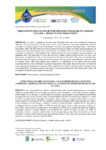Por favor, use este identificador para citar o enlazar este ítem:
http://www.alice.cnptia.embrapa.br/alice/handle/doc/1002160Registro completo de metadatos
| Campo DC | Valor | Lengua/Idioma |
|---|---|---|
| dc.contributor.author | RODRIGUES, L. N. | pt_BR |
| dc.contributor.author | VAN VLIET, W. A. M. | pt_BR |
| dc.date.accessioned | 2014-12-10T11:11:11Z | pt_BR |
| dc.date.available | 2014-12-10T11:11:11Z | pt_BR |
| dc.date.created | 2014-12-10 | pt_BR |
| dc.date.issued | 2014 | pt_BR |
| dc.identifier.citation | In: INOVAGRI INTERNATIONAL MEETING, 2.; SIMPÓSIO BRASILEIRO DE SALINIDADE, 2.; REUNIÃO BRASILEIRA SOBRE ENGENHARIA DA IRRIGAÇÃO, 2., Fortaleza, 2014. Anais... Piracicaba: INOVAGRI: INCT-EI: INCTSA, 2014. p. 299-308. | pt_BR |
| dc.identifier.uri | http://www.alice.cnptia.embrapa.br/alice/handle/doc/1002160 | pt_BR |
| dc.description | RESUMO: Com a necessidade de se utilizar a água de forma cada vez mais eficientemente, faz necessário melhorar a produtividade de uso da água em escala de bacia hidrográfica. Este estudo objetivou avaliar a produtividade de uso da água e a possibilidade de aumentar a área irrigada na bacia hidrográfica do Buriti Vermelho, Brasil. o modelo de Solo-Água-Atmosfera-Planta (SWAP) foi utilizado nas simulações. A bacia do Buriti Vermelho possui agricultura de sequeiro (soja e milho), e irrigada (milho, feijão e trigo). A produtividade de uso da água (CWP) foi calculada em função da lâmina total de água aplicada, que inclui a soma da irrigação e da precipitação. Avaliou-se também o período ideal para o plantio da soja, buscando-se o rendimento ótimo e a maior CWP. A CWP variou de 0,32 kg m-3, para a cultura da soja, a 1,90 kg m-3 para o trigo. Para o período estudado houve uma redução da CWP com o aumento da lâmina de irrigação. A irrigação mostrou ter grande influência no rendimento das culturas do feijão, do trigo e do milho. O rendimento ótimo e a máxima produtividade de uso da água para a soja foram observados no mês de novembro. O cenário futuro mostrou que haverá decréscimo na CWP e que será necessário aplicar mais água para se conseguir as mesmas produtividades. ABSTRACT: As water is required to be used more efficiently, the crop water productivity should be improved. The main objective of this paper was to assess both the crop water productivity and the possibility to expand irrigated land in the Buriti Vermelho experimental watershed, Brazil. Soil-Water-Atmosphere-Plant (SWAP) model was used to perform the analysis. Buriti Vermelho contains both rain fed (soybean and corn) and irrigated (corn, common beans and wheat) crops. The crop water productivity was calculated as a function of total applied water, which includes the sum of irrigation and precipitation. An additional study was performed to verify the most ideal rainfed soybean growth period. The crop water productivity varied from 0.32 kg m-3 for soybeans to 1.90 kg m-3 for wheat. The crop water productivity decreased when the irrigation amount increased. Irrigation showed to have a big influence on the crop yield of common beans, wheat and rainfed corn, caused by a combination of low rainfall and low actual evapotranspiration values with higher irrigation requirements. The results showed November as being the most optimal growth period for soybeans. This month showed both the optimal yield as maximum crop water productivity. The future forecasts a decrease in crop water productivity, what means more water will be needed to reach the same amount of crop yield. | pt_BR |
| dc.language.iso | eng | eng |
| dc.rights | openAccess | eng |
| dc.subject | Buriti Vermelho | pt_BR |
| dc.subject | Produtividade da água | pt_BR |
| dc.subject | SWAP | pt_BR |
| dc.title | Irrigation water strategies for the Buriti Vermelho watershed: towards a higher water productivity. | pt_BR |
| dc.type | Artigo em anais e proceedings | pt_BR |
| dc.date.updated | 2015-09-21T11:11:11Z | pt_BR |
| dc.subject.thesagro | Recurso hídrico | pt_BR |
| dc.subject.thesagro | Irrigação | pt_BR |
| dc.subject.thesagro | Bacia Hidrográfica | pt_BR |
| dc.subject.nalthesaurus | Water resources | pt_BR |
| dc.subject.nalthesaurus | Irrigation | pt_BR |
| riaa.ainfo.id | 1002160 | pt_BR |
| riaa.ainfo.lastupdate | 2015-09-21 | pt_BR |
| dc.contributor.institution | LINEU NEIVA RODRIGUES, CPAC. | pt_BR |
| Aparece en las colecciones: | Artigo em anais de congresso (CPAC)  | |
Ficheros en este ítem:
| Fichero | Descripción | Tamaño | Formato | |
|---|---|---|---|---|
| 34223.pdf | 457,49 kB | Adobe PDF |  Visualizar/Abrir |









